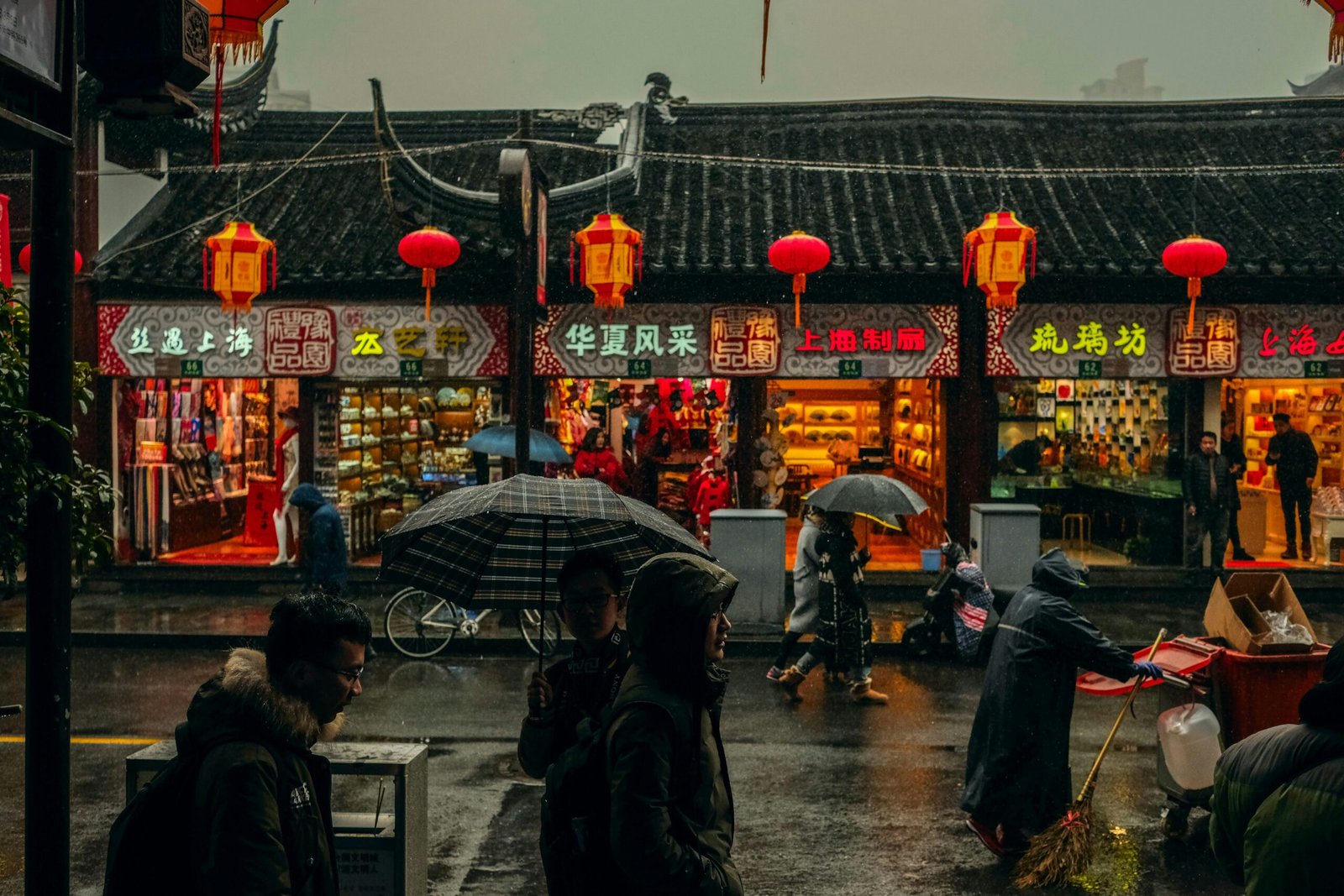A Comprehensive History of the China Economy: Charting the Path to 2025
China’s economic history is essential for grasping the complexities of the global economic landscape. Over the past few decades, China has transformed from a predominantly agrarian society into a formidable economic powerhouse. This transition not only altered the internal dynamics of the nation but also significantly influenced global trade, finance, and geopolitics. As one of the largest economies in the world, China’s decisions and economic policies resonate far beyond its borders, impacting markets and nations worldwide.
The evolution of the Chinese economy, particularly since the late 20th century, offers critical insights into the mechanisms of growth, innovation, and development. China’s shift from a centrally planned economy to a more market-oriented model—guided by reforms initiated in the 1970s—has elevated millions from poverty and fundamentally reshaped the nation’s role in international affairs. Understanding this journey allows policymakers, investors, and scholars to analyze their strategies in an increasingly interconnected global economy.
Furthermore, an examination of China’s economic trajectory provides a context for understanding its ambitions through initiatives like the Belt and Road Initiative. Such projects highlight China’s focus on establishing trade routes and partnerships that can alter global economic dynamics. The implications of China’s economic policies are multifaceted, touching on trade imbalances, currency fluctuations, and international diplomatic relations, thus maintaining a steady influence on global markets.
In a world marked by rapid changes, the significance of examining China’s economic history cannot be overstated. It is not merely a matter of historical interest; it serves as a crucial framework for predicting future trends and understanding the factors that will shape the international economic environment leading up to 2025 and beyond. Consequently, comprehending this journey is quintessential in navigating the complexities of today’s global economy.
Pre-Reform Era: An Overview of the Chinese Economy Before 1978
The Chinese economy prior to 1978 was characterized by a centrally planned economic model primarily influenced by the leadership of Mao Zedong. This period was marked by extensive state control over all aspects of economic life, including agriculture, industry, and trade. Following the establishment of the People’s Republic of China in 1949, the government prioritized collectivization of agriculture, which significantly altered the rural landscape. The introduction of communes aimed to enhance agricultural production through collective farming, but the results were often catastrophic, leading to widespread famine and inefficiencies.
Moreover, the state heavily regulated industry, with most enterprises being state-owned and operated. The emphasis on heavy industry often resulted in the neglect of consumer goods production, limiting the availability of basic necessities for the population. This state intervention extended into price controls, where the government fixed prices for goods and services, further exacerbating market distortions.
During this period, the socio-economic challenges were apparent. The lack of competition diminished innovation and productivity, while the planned economy’s rigidity made it difficult to respond effectively to the needs and wants of the population. Periodic campaigns and movements, such as the Great Leap Forward and the Cultural Revolution, diverted resources and caused significant disruptions, contributing to vast economic setbacks. It was not until the late 1970s that significant reforms were considered to transition from this rigid economic structure. As a result, the limitations of the planned economy became increasingly evident, necessitating a shift towards more open policies and market-oriented reforms. Such reforms were eventually spearheaded by Deng Xiaoping, marking a pivotal transition in the trajectory of the Chinese economy.
The Economic Reforms of 1978: A Turning Point
The year 1978 marks a critical juncture in China’s economic history, representing the inception of significant reforms that would reshape the nation’s economic landscape. These reforms were spearheaded by Deng Xiaoping and aimed at transitioning China from a centrally planned economy to a more market-oriented structure. Central to this transformation was the introduction of the “Open Door Policy,” which facilitated foreign investment and encouraged trade. This policy promoted international cooperation, leading to a diversification of China’s economic partnerships and a surge in foreign direct investment (FDI).
Another revolutionary aspect of these reforms was the establishment of Special Economic Zones (SEZs), which were strategically located in cities such as Shenzhen, Zhuhai, and Xiamen. These zones functioned as test beds for market-oriented policies, providing favorable conditions for both local and foreign enterprises. The SEZs operated with more flexible economic regulations compared to the rest of China, allowing for innovative business models and attracting a significant influx of capital and technological advancement. As a result, the SEZs became instrumental in catalyzing rapid industrial growth and urbanization.
Moreover, the shift from collectivization to the household responsibility system dramatically altered agricultural production dynamics. Farmers were granted the autonomy to manage their lands and were incentivized to produce surplus crops for sale in the market, leading to increased agricultural output and rural incomes. This policy proved beneficial, as it not only alleviated poverty in rural areas but also laid the groundwork for subsequent economic growth.
In the wake of these reforms, China’s economy experienced unprecedented growth, with GDP surging and industrialization gaining momentum. The cumulative impact of the 1978 reforms has been profound, laying the foundation for the modernization efforts that would propel China into a global economic powerhouse. As we analyze the trajectory of China’s economy, it becomes clear that these reforms were more than just policy adjustments; they represented a fundamental pivot towards embracing market principles, ultimately guiding the nation towards its ambitious goals set for 2025.
Rapid Growth: The Rise of China’s Economy in the 1990s and 2000s
The 1990s and early 2000s marked a transformative period in the history of the Chinese economy, characterized by unprecedented growth rates that positioned China as a global economic powerhouse. Following the economic reforms initiated in the late 1970s by Deng Xiaoping, the nation embraced a strategy of opening up to international trade and foreign investment. This shift laid the groundwork for explosive economic development during the subsequent decades.
One of the key drivers of this rapid growth was the surge in foreign direct investment (FDI). The establishment of Special Economic Zones (SEZs), particularly in coastal cities like Shenzhen, created attractive environments for multinational corporations seeking to capitalize on China’s vast labor pool and burgeoning consumer market. Between 1990 and 2007, FDI inflows increased dramatically, contributing significantly to modernization in various sectors, including manufacturing, technology, and services.
The export-led growth model became another defining feature of this period. China’s integration into the World Trade Organization (WTO) in 2001 further facilitated access to international markets, enabling the country to become the world’s largest exporter by 2009. Chinese exports, particularly in electronics and textiles, fueled economic growth, while imports began to rise simultaneously, reflecting growing domestic demand.
Urbanization also emerged as a significant trend during these years, with millions of individuals migrating from rural areas to urban centers seeking employment opportunities. This rural-to-urban migration not only supported industrial expansion but also contributed to the emergence of a burgeoning middle class. By the mid-2000s, it was estimated that about 40% of the population resided in urban areas, which critically altered consumer behavior and economic dynamics.
Statistical insights reveal that China’s GDP grew at an average annual rate of approximately 10% during these decades, distinguishing it as one of the fastest-growing economies in history. This remarkable expansion was marked not just by quantitative metrics, but also by qualitative changes that redefined the fabric of Chinese society and its economic landscape.
Challenges and Adjustments: The 2008 Financial Crisis and Its Aftermath
The 2008 global financial crisis marked a significant turning point in the global economy, presenting both challenges and opportunities for China’s economic landscape. As a major global exporter, China was initially affected by a sharp decline in demand for its goods, leading to concerns about sustainability within an export-dependent model. In response, the Chinese government rolled out a series of aggressive stimulus measures, injecting approximately 4 trillion yuan into the economy, aimed at bolstering infrastructure projects and maintaining economic growth.
This stimulus was pivotal, as it not only cushioned the immediate impact of the crisis but also laid the foundation for a necessary economic shift. However, the reliance on stimulus measures also highlighted the vulnerabilities within China’s economic structure. As exports diminished, it became apparent that an over-dependence on international markets posed risks, prompting policymakers to reconsider the long-term strategy. This transition led to a push towards internal consumption and innovation, in alignment with the newly established ‘New Normal’ growth model. The ‘New Normal’ emphasized more sustainable and balanced economic development, focusing on quality over quantity.
The Belt and Road Initiative: Expanding Economic Influence
The Belt and Road Initiative (BRI), unveiled by China in 2013, represents a significant facet of the country’s strategy to bolster its economic influence on a global scale. This ambitious initiative is designed to facilitate trade and investment across Asia, Europe, Africa, and beyond, thus creating an extensive network of economic cooperation. The BRI’s primary objective is to promote connectivity and foster economic development through infrastructure investment, while also establishing China’s dominance in international markets.
At its core, the BRI is focused on enhancing physical and digital infrastructure, including the construction of roads, railways, ports, and energy projects. By financing these developments, often through loans from Chinese banks, the initiative aims to reduce trade barriers and stimulate economic growth among participating countries. In turn, these investments help secure new markets for Chinese goods, thereby strengthening their supply chains and fostering sustained economic development. Consequently, countries along the Belt and Road are increasingly drawn into economic partnerships with China, seeking both investment and market access.
Moreover, the strategic partnerships fostered by the BRI extend beyond mere infrastructure projects. They encapsulate a wider spectrum of cooperation, encompassing sectors such as technology, finance, and cultural exchange. Through these collaborations, China not only enhances its economic ties but also solidifies its geopolitical standing by becoming an essential partner in the development of various nations. As these partnerships evolve, they contribute to reshaping the global economic landscape, challenging traditional power dynamics and providing new opportunities for influence.
In light of these dynamics, the Belt and Road Initiative signifies a pivotal evolution in China’s approach to international trade and investment, marking a transformative shift that positions it as a key player on the global economic stage as it moves towards its 2025 objectives.
China’s Technological Advancements: Driving the Future Economy
In recent years, China’s technology sector has emerged as a formidable engine driving its economic growth and development. The government has played a crucial role in actively promoting innovation, guiding the trajectory of technology from a mere support system to a cornerstone of the economy. Policies such as “Made in China 2025” and significant investments in research and development have cultivated an environment conducive to the emergence of leading tech companies. These initiatives are crafted to advance sectors like artificial intelligence (AI), 5G telecommunications, and digital finance, positioning China to compete on a global scale.
The rise of AI technologies within China showcases the country’s ambition to lead in this field. Massive data utilization and machine learning have seen widespread implementation in various industries, including healthcare, manufacturing, and logistics. This has not only optimized operations but has also created a burgeoning data-driven economy, where efficiency and innovation are paramount. As a result, the integration of AI across different sectors is anticipated to reshape economic landscapes and contribute significantly to GDP growth.
Additionally, the rollout of 5G networks is revolutionizing the way industries operate. This high-speed connectivity facilitates a seamless intersection between the physical and digital realms, enabling advancements in smart cities, autonomous vehicles, and industrial IoT (Internet of Things). China’s commitment to establishing a comprehensive 5G infrastructure is expected to provide a substantial boost to various economic activities by enhancing communication, operational efficiency, and consumer engagement.
Moreover, digital finance has become a focal point for the transformation of China’s economic model. With the rapid adoption of mobile payment systems and fintech solutions, China is leading the way in redefining banking and financial services. Digital currencies and blockchain technology, supported by government initiatives, promise to further innovate and secure the financial landscape. Through these technological advancements, China is strategically positioning itself to not only strengthen its domestic economy but also to assert its influence in global economic competition leading up to 2025.
Sustainability and Economic Reform: The Road Towards 2025
In recent years, China’s economic landscape has undergone significant transformation, predominantly characterized by an ambitious shift towards sustainability. This pivot reflects a broader recognition of the essential relationship between economic development and environmental stewardship. Reforms aimed at creating a sustainable economy are becoming increasingly vital, particularly as China grapples with severe pollution levels and the pressing realities of climate change. As such, new policies have been implemented to align immediate economic objectives with long-term environmental responsibilities.
One of the cornerstone initiatives has been the aggressive promotion of renewable energy sources. The Chinese government has invested heavily in solar, wind, and hydroelectric power, positioning itself as a global leader in renewable technology. This focus on clean energy infrastructure not only aims to reduce the nation’s carbon footprint but also stimulates economic growth through job creation and innovation in the energy sector. These efforts are complemented by strict regulations on industries responsible for high emissions, reinforcing the commitment to a lower-carbon economy.
Furthermore, the government has introduced incentives for companies to adopt sustainable practices through the use of green financing. This approach encourages businesses to undertake eco-friendly initiatives while maintaining profitability. By integrating sustainability into economic reform policies, China strives to balance rapid industrial growth with environmental conservation, thereby setting a precedent for future development.
In conjunction with these economic reforms, there is a growing public awareness of environmental issues, prompting a cultural shift towards sustainability among consumers and businesses alike. The increasing demand for environmentally responsible products reinforces the need for industries to adapt and innovate. As China approaches 2025, the effectiveness of these policies will play a crucial role in establishing a sustainable economy, serving as a potential model for other nations confronting similar challenges. The journey toward sustainable economic reform demonstrates China’s commitment to ensuring that economic expansion does not come at the expense of environmental degradation.
The Future of the Chinese Economy Beyond 2025
The trajectory of China’s economy has been shaped by numerous transformative events and policies over the last few decades, laying a complex foundation for its future beyond 2025. Analyzing these key developments reveals both opportunities and challenges for China’s economic landscape. As the nation continues to ascend as a global economic powerhouse, a host of issues merits careful consideration.
One prominent challenge facing the Chinese economy is demographic change. With a rapidly aging population, the country could confront significant labor shortages and increased pressure on social security systems. Moreover, this demographic shift could potentially slow down economic growth rates, requiring a reevaluation of labor market strategies. The younger workforce will need to be engaged through technological advancement and heightened productivity to counterbalance these trends.
Additionally, China must navigate ongoing trade tensions with other global powers, notably the United States. These tensions could impact export-driven sectors, forcing China to rethink its reliance on international markets. In response, policies promoting domestic consumption and innovation are essential in fostering economic resilience. This shift may enhance the competitiveness of Chinese industries while also steering the economy towards a more sustainable growth model.
Furthermore, global economic shifts such as the rise of emerging markets and changing consumer behaviors call for an adaptable approach to economic strategy. China’s leadership must focus on embracing innovation, fostering entrepreneurship, and supporting research and development to maintain its competitive edge. Strategically investing in green technologies and industries could also not only address environmental concerns but help propel the economy forward.
In summary, to secure a prosperous future beyond 2025, China will need to address demographic challenges, navigate complex international relations, and adapt to global economic changes by fostering innovation and sustainability. The path forward necessitates agility, foresight, and a commitment to evolving in an increasingly interconnected world.




